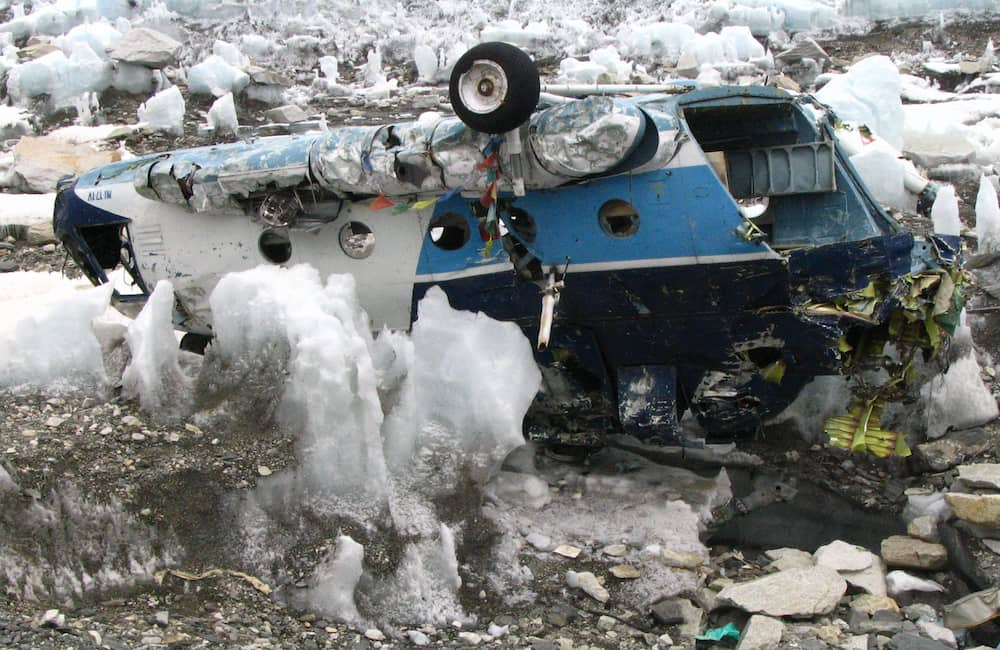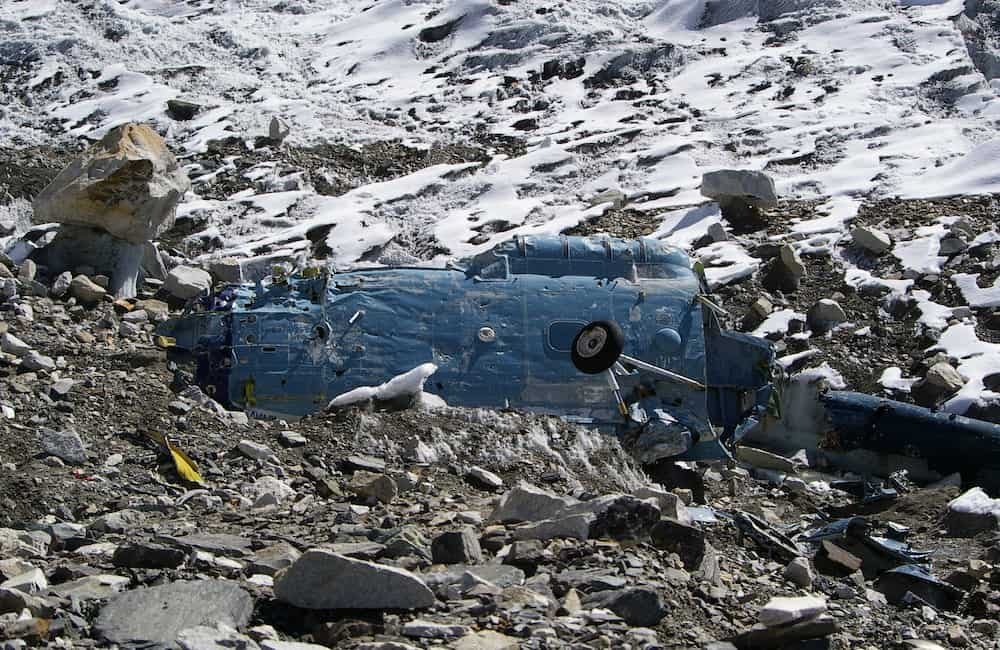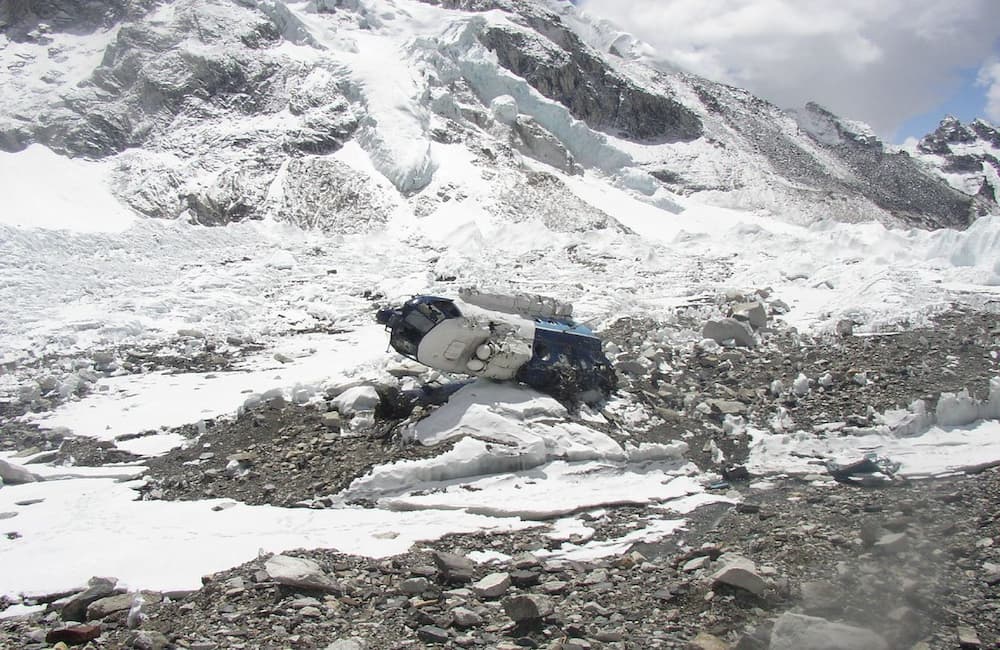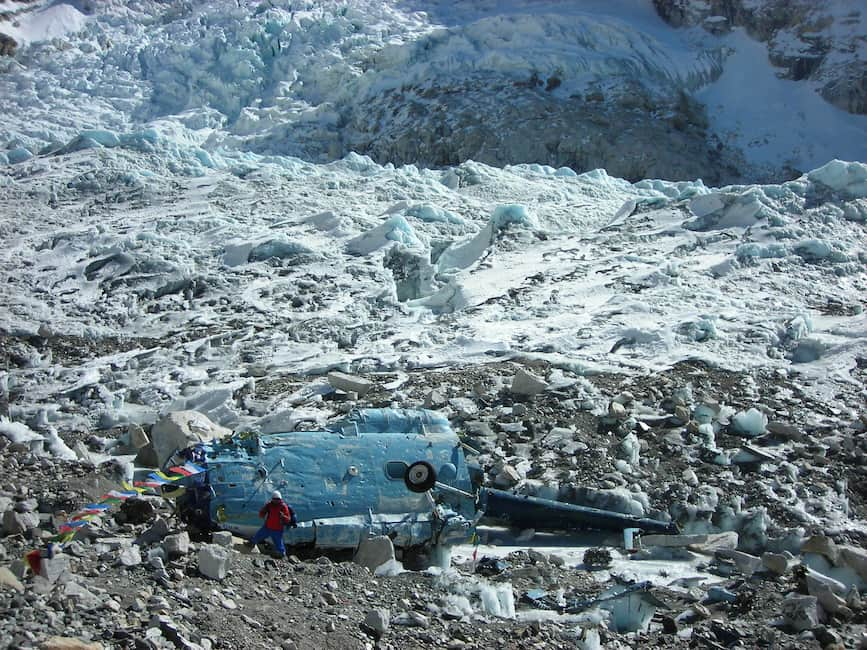Why helicopter flights are so popular in Nepal
Nepal's geography is both the boon and the bane of the nation. Towering mountains and deep valleys make up stunning scenery but are logistically a nightmare to get around. Most of the remote areas in Nepal remain inaccessible by road, with treks to these places sometimes taking weeks or even months. That’s why they want to ride with helicopters to come in.
Medical Evacuations
Helicopters mostly evacuate injured or ailing trekkers and climbers out of high-altitude areas very fast. When someone suffers from altitude sickness, breaks a bone, can’t hike up to the mountain, saves time, has easy excess, or has another serious condition, it is all about time. A helicopter can mean the difference between life and death.

Sightseeing Tours
People love to In this respect, helicopter tours are the most effective and rapid way to see all the beauty of the Himalayas for people who cannot make their way up to Everest Base Camp,Annapurna base camp, Mardi Himal,Langtang Valley trek, Manasau circuit trek, Kailash Mansarovar tour or any other famous Peak. Turning out to be very popular among time-constrained travellers, these tours are especially in demand by people with physical limitations.
Supplies Transport
Besides ferrying passengers, supplies are also airlifted to remote villages and mountain camps. This would range from food, engine oil, and medicine to construction equipment and supplies.
Challenges of Flying in Nepal
Flying a helicopter over Nepal is nothing like flying anywhere else in the world. The unique geography of the country, and with its unpredictable weather and lack of infrastructure, makes every flight a potential challenge.
Rugged Terrain
There is beauty and danger in Nepal's mountainous landscape. Pillars have to fly through narrow valleys, cliffs, and towering peaks—many with little room for error. High altitudes also mean helicopters have to work harder to generate lift, straining them extra hard.
Unpredictable Weather:
The weather in the mountains changes within minutes, and at times, there is just no warning. The sky could be clear in one minute and, in the next, it would be a blinding snowstorm. Strong winds can again make flying difficult. Pilots should be ready for any eventuality and have to make split-second decisions to safeguard their passengers.
Inadequate Infrastructure
Many of Nepal's helipads are simply flat areas of land, and some are in very remote locations. That means that if something goes wrong, help may be hours – or even days – away. The country's air traffic control system is also not as developed as those elsewhere in the world – adding to the communications challenge.

History of Helicopter Crashes in Nepal
Helicopter crashes are nothing new to Nepal. Although most flights are completed without incident, there have been several tragic accidents over the years. Understanding the history of the crashes may make it easier to understand the risks.
Early Years of Aviation in Nepal
Helicopter service in Nepal started in the 1960s for military and rescue operations. As tourism began to increase, the need for helicopter flights also rose. The early years of this age were inexperienced and improper maintenance-based, resulting in lots of accidents.
Notable Crashes
Some of the notable helicopter crashes in Nepal include:
On August 7, 2024 helicopter crash, The Dynasty Air helicopter, resulting in the deaths of all five people on board. Surya Chaur-7, Shıvapuri Nuwakot
In April 1993 helicopter crash Himalayan Air helicopter in the Lantang region
On September 3 2006 Aire Dynasty Helicopter crashed in the Dhaulagiri base camp
2006 Shree Air Crash A helicopter carrying 24 people, among them conservationists and government officials, crashed in Ghunsa, Taplejung. All on board were killed. The crash was attributed to poor weather conditions and pilot error.
On 29 June 2008 Fishtail Air Crash: A helicopter returning from a sightseeing tour near the Annapurna region with six tourists crashed, killing all six passengers and the pilot. Investigations pointed out that sudden changes in the weather were likely to be the cause.
On 15 November 2009, the Manang Air Helicopter crashed in Rudikot, Humla District
On 7 November 2010, a Fishtail Air Helicopter crashed in the Solukhumbu Everest region
On 29 November 2011, a Fishtail Air Helicopter crashed in the Simikot Muchu
On 3 August 2014, a Fishtail Air Helicopter crashed in the Sindhupalchok
On 11 July Manang Air Crash A helicopter collided with a plane on the ground at Lukla Airport, said to be one of the world's most dangerous airports. Three people died in that crash. It once again brought to the forefront how challenging it is to fly amid such congestion.
Recent Incidents
In the recent past, there have been several helicopter crashes in Nepal, some of which have been fatal. This has raised concerns about safety standards and whether there needs to be a tightening of the screws.
.jpg)
Why Do Helicopter Crashes Happen in Nepal?
Several factors contribute to making helicopter crashes frequent in this country. Some are unique to the country, while others are general to helicopter operations worldwide.
Human Error
Pilot error represents a high factor in helicopter crashes, globally, and Nepal is no exception. Inexperience, fatigue, and poor judgment are all elements that lead up to any accident. At times, pilots may feel under pressure to complete a flight despite poor weather conditions or other risks.
Mechanical Failures
Helicopters are very complex machinery that needs servicing all the time to make them fly safely. Nepal's rugged terrain and other geographical features, not to speak of a lack of advanced infrastructure, make it not so easy to keep aircraft in pristine condition. Mechanical failures, be they due to poor maintenance or manufacturing defects, can bring about catastrophic accidents.
Weather Conditions
As stated before, weather conditions around Nepal's mountains are very unpredictable. Sudden storms and high winds, with the visibility of mere meters, create an extremely dangerous situation in which to fly. Even the most seasoned pilots can easily find themselves in a position to not be able to safely navigate the terrain.
Infrastructure and Regulation
The aviation infrastructure of Nepal is still under development, and much more is required regarding raising safety standards and effectively implementing more regulations. From the opinion of some experts, the government could do more by enforcing some of the existing rules or through the provision of ensuring best practices among all operators.
.jpg)
Impact of Helicopter Crashes in Nepal
Helicopter crashes in Nepal have consequences that are not only disastrous about the prevalence of casualties at the time of the accident. It has far-reaching effects on the country's tourism, economy, and reputation.
Loss of Life beneficial
The loss of life, in the instance of any helicopter crash, is one of the saddest parts. Most casualties are tourists, mountaineers, and local guides who want to see the beauty of Nepal or assist others in viewing it. The loss of so many experienced pilots and aeronautical professionals is a great loss to the aviation sector at large.
Economic Impact
Nepal highly depends on tourism as a source of revenue, and helicopter crashes have a substantial print on the tourism business. Incidents of an accident will keep away many visiting tourists, which means that the bookings and revenues will drop significantly. The local communities engaged in tourism will be hugely disadvantaged.
Frequent cases of helicopter crashes can give a bad name to Nepal as a safe place for adventure travel. Although it remains a favourite place for trekkers and climbers, such apprehensions may keep some tourists away from the country.
What is Being Done to Improve Safety?
It has led to all these tensions and imposing tighter regulations on the helicopter service of Nepal, both by the government and private operators, to increase the bar of standards and reduce the risks of mishaps.
The Civil Aviation Authority of Nepal has successfully managed to put helicopter operators under stiffer regulations about upgrading training requirements for pilots and higher frequencies of safety inspection on aircraft. This development will ensure that only eligible pilots take to the skies and that helicopters are properly maintained.
Improved Weather Forecasting
Advances in weather prediction technology now make it easier for pilots to plan their flights and avoid risky conditions. The government has also made efforts to enhance the meteorological services of the country so that they could give more precise and timely information to pilots.
Better Training Programs
International mountain flight pilot programs have expanded to provide training with more detailed instructions on mountain flying and emergency procedures. As well, some operators have adopted simulator training to allow pilots to practice and familiarize themselves with handling challenging situations.
International Organization Coordination
Nepal has invited international support from aviation organizations to level up the standards and learn best practices of safety measures; on this note, new safety protocols acquired by Nepali civil aviation ultimately are based on world-recognized standards.

Useful tips for travellers wanting to experience helicopter tours in Nepal:
In case you are going to visit Nepal and have thought of taking a chopper ride to lower your risk, you need to follow the undermentioned steps so that you can have an experience free of danger:
Use a Reputable Operator
Do your research well before choosing a helicopter operator whose safety record is good and whose travellers have given a thumbs-up. Avoid operators who charge trap, hide, or give unusually low prices as this might indicate cutting safety corners.
Be Weather Prepared
Realize that the weather here in the mountains in Nepal can change quickly and without any notice. Understand that you can experience delays or cancellations because of adverse conditions in the mountains. We rather delay a flight and see that you reach your destination safely than make a hazardous flight.
Follow Safety Instructions
Listen carefully to the safety briefing that the pilot or the crew provides, taking care to follow all instructions during the flight. A few of these instructions are always to keep strapped in with the seatbelt, keep any personal belongings secure, and not walk outside the seat area until the pilot gives the all-clear.
Consider Alternative Options
Moreover, if you feel a bit unconfident and that flying in a helicopter is a pretty risky experience, there are alternatives to trekking and fixed-wing flight. Significantly, you will lose much time, but earn more safety and possibly the same satisfaction.

Conclusion
Helicopter crashes in Nepal put into perspective the risks and challenges of flying in one of the most beautiful rugged regions globally. Helicopters offer numerous services, from medical evacuation to transportation and sightseeing tours. However, they do all this in a slim-error-margin environment. Unpredictable weather, rough landscape, and human error are some reasons these sad occurrences are frequent.
On the other side, one should be well aware of efforts made toward strengthening safety within Nepal's aviation industry. The tightening of regulations, better training for pilots, and improvements in weather forecasting are steps in the right direction. The traveller can also be prepared with information and caution as a means of minimizing the risk.
In case you do go on a helicopter flight in Nepal, remember the operator’s choice, prepare for the vagaries of the weather, and follow safety instructions. After all, flying over the Himalayas does present an invitation hard to decline, but there's always that question of safety that has to come first.
After all, having an understanding of the risks and realities of helicopter flights in Nepal will give you informed decisions that heighten your experience while prioritizing your well-being. Hopefully, with such changes, as Nepal advances in the aviation industry, the environment for locals and visitors alike will become much safer, with fewer accidents





.jpg)
.jpg)


